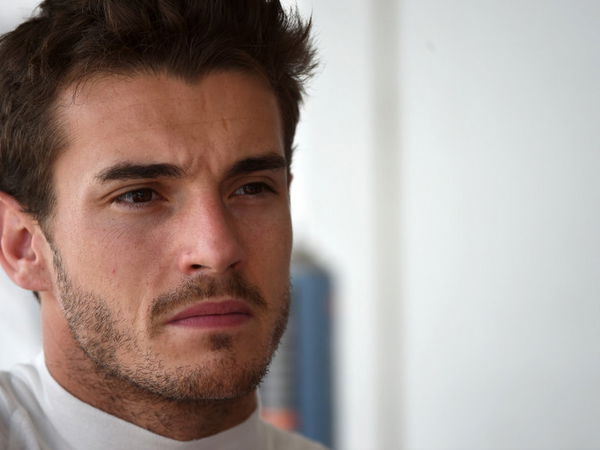
via Imago
Bianchi, gone but not forgotten

via Imago
Bianchi, gone but not forgotten
The adrenaline rush we feel seeing those cars at 300 kmph zoom past the TV screen, the excitement on Saturday as the top drivers push to the edge to stand on pole. Those bold and risky overtaking moves, the eventful races in rain, this is what makes F1 the sport that it is.
With good comes bad. Similarly with those fast cars and bold overtaking moves comes the added risk of crashing. Risk of death. Seeing Mark Webber’s horrible 360 degree crash in Valencia, 2010, made me believe that these F1 drivers can never be harmed. Such is the pro-ness in safety of the sport. Measures were taken to make sure that Ayrton Senna remains the last man to die of an F1 car. And till 18th July, 2015, he remained so.
As we all know, Jules Bianchi suffered horrible head injuries after crashing into a recovery vehicle in the 2014 Japanese Grand Prix. While his condition was questionable throughout, nobody thought that they wouldn’t be able to see the charismatic French, up again. At 1:45 GMT on Saturday, he passed away, after battling till the very end with his injuries.
ADVERTISEMENT
Article continues below this ad
I woke up to this news and instantly felt a heavy stone had been dropped on my heart. No, he was not my favourite. No, he was not the one I had followed since the beginning. But he was a part of Formula One. He was the reason why we still have Marussia/Manor today. He shined among those pay drivers at the back and showed that skill still weighs more than talent. Jule’s death reminds us that no matter how safe these monsterous cars might be, the driver is every second under the risk of crashing. Under the risk of death. There’s no escaping it.
ADVERTISEMENT
Article continues below this ad
July 18th, 2015 marks a horrid day for the sport that I myself have deeply admired as the most technologically advanced sport with its fancy engineering marvels. Those 20 drivers, when they get out to race the next weekend in Hungary, will be reminded every second of the constant threat that lies over them and how for granted they had taken their lives.
This reminds us, fans, that the drivers we treat as gods, are mortal. While we continue to whine about F1 being less interesting, drivers not pushing, this serves us a healthy reminder that we may as well shut up and value the lives of these drivers more than our entertainment. We want V10s, we want V12s, we want refueling, faster cars and more risks. We want crashes. We want chaos. We value our entertainment more than the life of the racers.
While a large number of F1 drivers have tweeted or posted on instagram remembering him, this article is my own tribute to Jules Bianchi, the driver of Car #17 Marussia Ferrari. I wish FIA retires the Car #17 and that it remains forever as the car the mighty Jules Bianchi drove. If only the race at Suzuka would have been cancelled. But no, the FIA and Mr. Ecclestone didn’t want to disappoint the massive fans present there. You stood up for the 200,000 fans present there. But you’ve broken the heart of everyone in the F1 fraternity.
ADVERTISEMENT
Article continues below this ad
Jules Bianchi died doing what he loved to do. In the very car he drove all the way to ninth position at the 2014 Monaco Grand Prix. He touched a lot of hearts. He will forever serve as an eye opener for FIA who continues to value fans and money and audience over the life of the drivers.
Rest in peace, Jules. Watching Manor race will serve us as a constant reminder of your speed and skills. I as a fan will forever miss writing #ForzaJules or googling about you every other week.
Farewell. Rest in peace.
ADVERTISEMENT
ADVERTISEMENT
ADVERTISEMENT
ADVERTISEMENT

